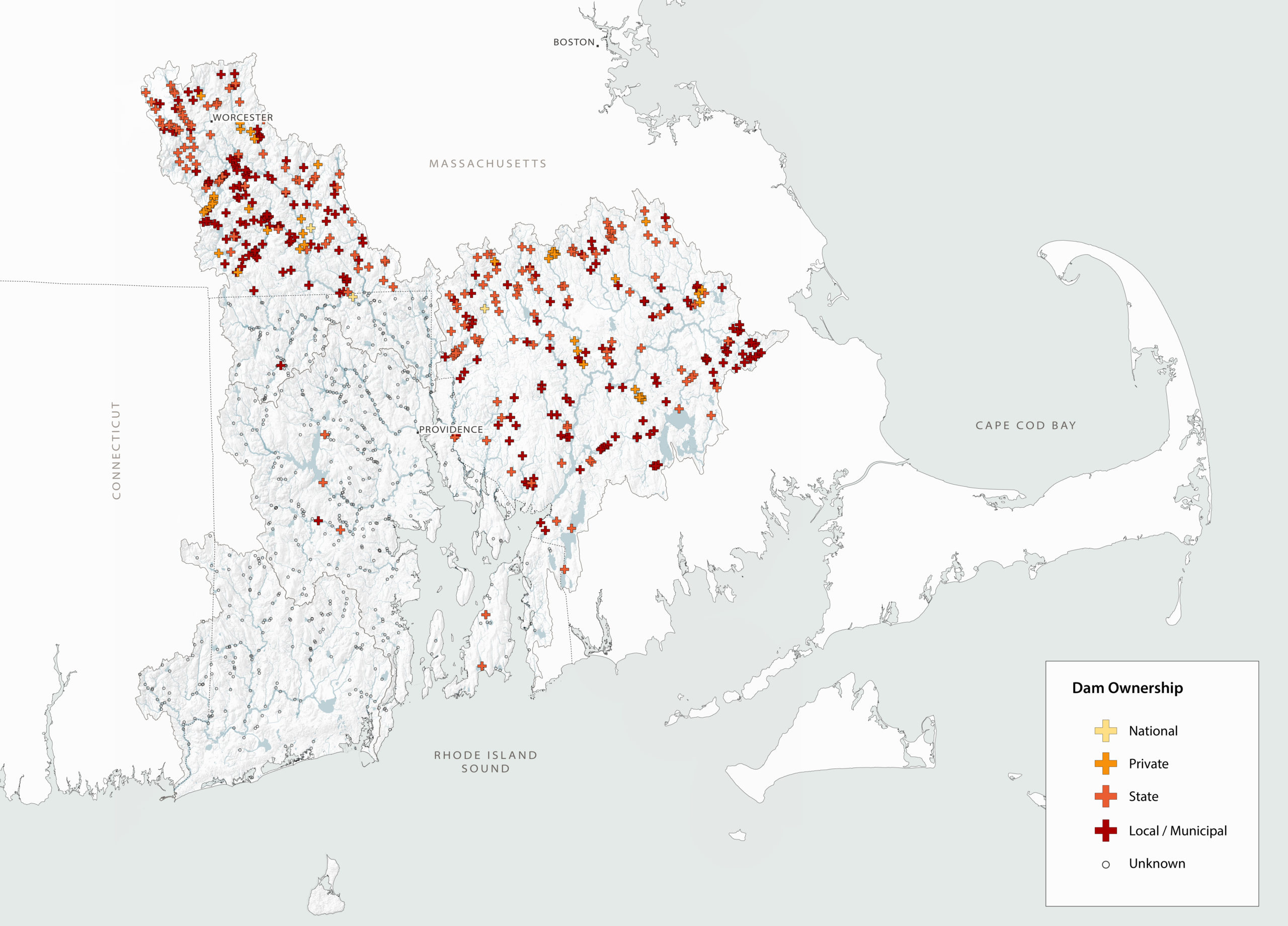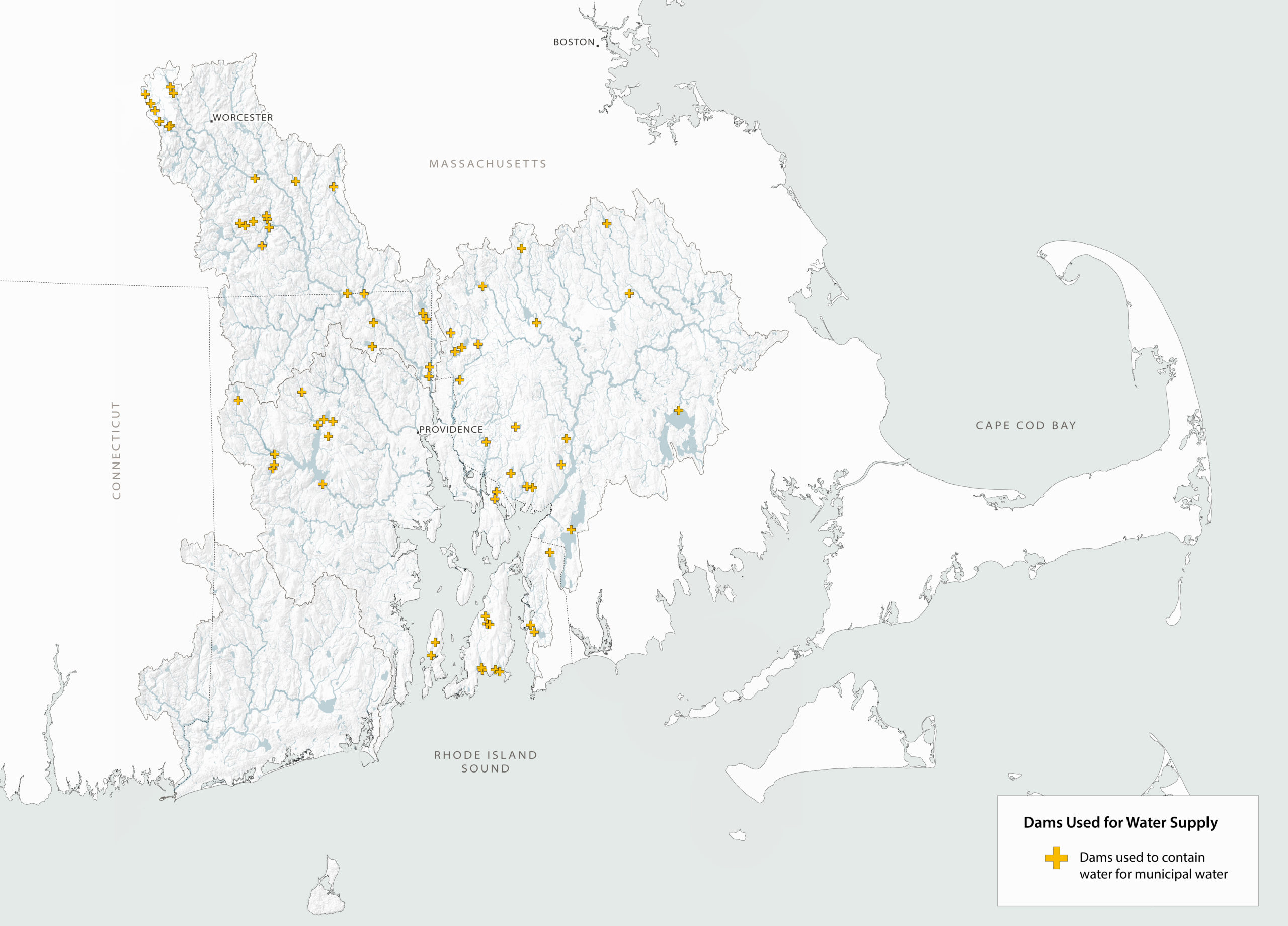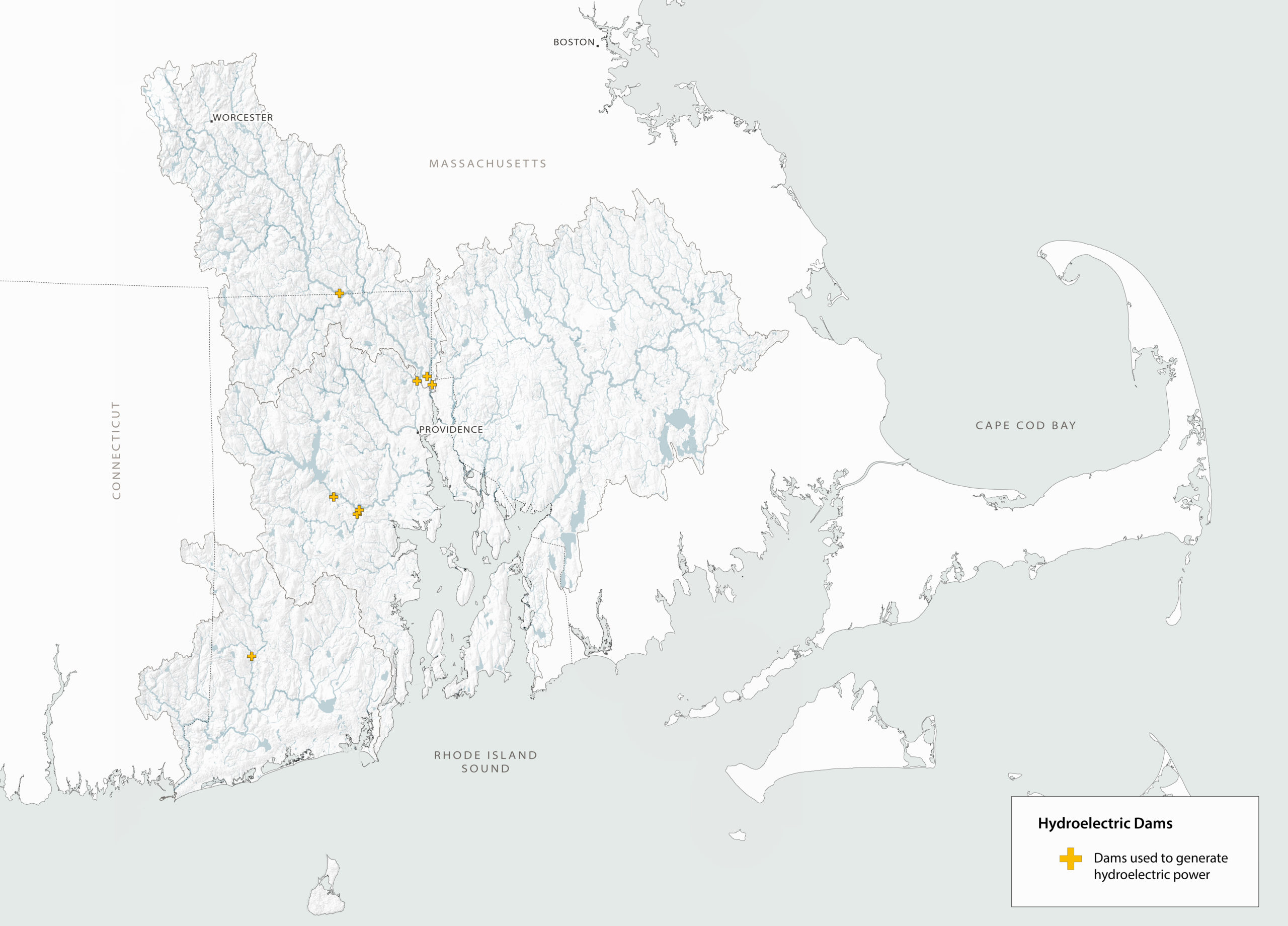Dam Types, Uses, and Ownership
Dam Types
Depending on the size, age, and use of a dam, a range of construction materials and methods may have been used in the original construction of the dam. Some common materials used to construct dams include earth, concrete, and masonry. Embankment dams are made of compacted earth (“earthfill”) or rock (“rockfill”). Concrete and masonry dams are categorized into gravity or arch dams. Gravity dams are designed to hold back water by using only the weight of the material. Arch dams are thin in cross section and the force of the reservoir water is borne by the abutments on the side of the dam. Some smaller historic dams within Narragansett Bay and the Coastal watersheds were originally timber crib dams that were constructed of heavy timbers stacked like a log house and filled in with earth or rubble. Most of the timber crib dams were later rebuilt with concrete and stone. Many older dams are composed of a combination of materials as repairs and changes were made to the structure over the years.

Embankment dam, gravity dam, arch dam, and timber crib dam
Dams operate in a range of ways depending on their intended purpose. Two common types of dams are run-of-the-river dams and detention or storage dams. Run-of-river dams have low water storage capacity and little impact to the water flowing over a dam. Thus, run-of-river dams have minimal fluctuation in water levels –the amount of water that flows over the dam is essentially equivalent to the amount that would be present without the dam. Many of the dams in Narragansett Bay and coastal watersheds are considered run-of-river dams. Detention or storage dams typically have large reservoirs that store water. When constructed, they often served a specific purpose, such as water supply, irrigation, and hydroelectric power. Flood control dams are a form of detention dam with the capacity to fill up during flood conditions.

Detention or storage dam and run-of-river dam
Dam Ownership
Unlike the large federally-owned dams in the Western United States, the majority of dams in New England were constructed by private individuals and companies to power mills and many are still privately owned. Within the Narragansett Bay and coastal watersheds, records from state regulatory authorities show that of the dams whose owners are known, 42% of dams are privately owned, 0.5% are federally owned, 37% are owned by states and municipalities. When a property with a dam is sold, the ownership and responsibility for the dam is transferred to the new owner. While some landowners may appreciate having a dam on their property, it is a liability. Dam owners are tasked with the responsibility of the safe operation of the dam and may be liable for the consequences of any accidents or failures of the dam. Furthermore, dam owners must incur the costs of regular maintenance and repairs, as well as the acquisition of any necessary licenses or inspections.
Within Narragansett Bay and the coastal watersheds, there are over 55% of dams whose owner is unknown to the state regulatory authorities. Since many of these dams are over a century old, ownership information may have been lost or forgotten over the years. These “orphan” dams provide a unique challenge for regulating authorities, as many of these dams are in need of repair and the responsible party is not clearly defined.
Even though the majority of dams are privately owned, dams are a public issue. Dams impact the health of rivers, which are a public common resource, and if not properly maintained, they can pose a significant threat to downstream communities. Although the dam owner is ultimately the decision-maker and is responsible for costs associated with the dam, the cost of repairs or removal often far exceeds the financial ability of most private owners – sometimes amounting to hundreds of thousands of dollars. There are no other examples in the United States of such widespread infrastructure being privately owned.

Ownership of dams in the Narragansett Bay and coastal watersheds.
For more information about individual dams, please see the interactive map.
Dam Use
The majority of dams in the Narragansett Bay and coastal watersheds were built for small-scale, localized production of hydropower but are now functionally obsolete. Many dams have been adapted to serve other functions, including recreation, small-scale hydroelectric power generation, and road, rail, or utility river-crossings. Within Narragansett Bay and the coastal watersheds, the majority of the population rely on surface water reservoirs to meet their water consumption needs. The Scituate Reservoir provides drinking water to over 60% of Rhode Islanders and the Assawompset Pond Complex provides water for much of South Eastern Massachusetts, including New Bedford and Taunton. Because they are critical utilities, it is important that these dams and reservoirs are properly maintained to support such functions.

Dams in Narragansett Bay that serve as a water supply.
For more information about individual dams, please see the interactive map.
Within the Narragansett Bay and coastal watersheds, 10 dams currently serve as a source of hydropower (7 in RI and 3 in MA). In Rhode Island, the seven commercial hydropower plants provide less than 0.3 percent of the state’s energy needs. Local electric utilities and the general public are increasingly interested in exploring carbon-free domestic energy sources. Some have advocated that the legacy dam infrastructure in the region could be transformed to provide local distributed energy production. However, given the topography, river flow rate, dam size, and available technology, there are limits to the amount of electricity that dams within the Narragansett Bay and the coastal watershed can generate. For example, a 20 foot tall dam that was proposed on the Pawtuxet river would have provided 0.3 MW of power, while a 70-acre solar power plant proposed for a landfill in East Providence would provide 3.7 MW of power. However, it is possible that new hydropower technology will be more efficient and make distributed micro-hydro (generating 5 kW to 100 kW of electricity) or pico-hydro (less than 5kW) power a possibility, but seasonal low flows will continue to be a challenge and constrain year round outputs.

Dams used for hydroelectric power within Narragansett Bay and coastal watersheds.
For more information about individual dams, please see the interactive map.
The type, ownership, and use of a dam determine how decisions are made about its future. See the Decision Making Tools section to see how ownership and use can affect the decision making process.